Hi there! Since you’ve landed on my blog, I’m pretty sure you’re either interested in purchasing a weather radio or just looking to do some research – either way, you’ve come to the right place! In your search for the best weather radio, you’re going to come across endless choices, which can make the process of picking one pretty daunting. But have no fear! I have created some guidelines for you to make it simple.On this page, you’ll read a lot of information about weather radios that you ought to know before making a choice. I suggest you read from the beginning to end if you’re new to weather radios; but if you already have some knowledge, feel free to skip around.
So, without further ado, here are the best weather radio picks of 2020. There’s a lot of information after this list too, so you may want to continue reading.
Best Weather Radio: 6 Picks of 2020
Best Weather Radio for Professionals
Midland WR400
The Midland WR400 is equipped with the most comprehensive array of features on the market. Programmed with over 80 types of storm alerts, S.A.M.E. technology, and an 85 decibel siren, this premium weather radio is designed to keep you far out of harm’s way. It can also receive up to 7 NOAA channels and is one of the only weather radios that is recommended by the Department of Homeland Security for emergency preparedness. It is not the most portable weather radio per se, but it is certainly the best one in terms of features, dependability and quality – a wise choice for anyone who is serious about staying safe. Keep in mind, however, that this device is meant to be used in home or place of business. It is not an outdoor unit.
Best Weather Radio for OUTDOOR USE
Kaito Voyager Pro KA600
This model is a bit more pricey than the Midland WR400 (“best professional” pick above), but for good reason. It has basically all the same features, but offers a lot more. Its rugged design makes it suitable for traveling and outdoor use. Furthermore, its flip-open solar panels and hand crank add additional sources of power for emergency situations. It works as a phone charger and flashlight and can tune into AM/FM channels in addition to NOAA ones. It serves you just as well beside your bed as it does out in the field. The Kaito Voyager is particularly popular among military and government personnel.
Best POCKET SIZE Weather Radio
C. Crane CC Pocket Weather Radio
Here, we have an excellent choice for those who require portability without the ruggedness of the Kaito Voyager. This weather radio is designed to slip in and out of your pocket for easy access. Furthermore, its simple shape and user-friendly button layout make operation a breeze. It is the preferred weather radio for construction workers, engineers, logistics specialists and the likes thereof. Since it does not have a crank or solar panels, however, it is not the best choice for extended outdoor journeys. Rest assured, though, that this model is well-built. C. Crane is a reputable brand that has been making weather radios for years.
Best Walkie Talkie Style Weather Radio
Midland GXT1000VP4
It’s hard to go wrong with this pair of dual purpose weather radios, backed by the reputable Midland brand. These powerful devices are designed for situations that require maximum teamwork and communication. With the ability to communicate with each other up to a whopping 36 miles, they also have 50 radio channels to choose from. As for the weather features, they have built-in automatic NOAA channel scanners and weather alerts that will warn you whenever severe weather is approaching. What’s more?: they’re waterproof! Keep in mind, however, that although these units come equipped with rechargeable battery packs, they do not have an additional source of power. Therefore, they are not suitable for staying off grid for too long.
Best Budget Weather Radio
RunningSnail Emergency Weather Radio
Due to the high value delivered in this compact, yet surprisingly capable device, the RunningSnail Emergency Weather Radio is high recommended for those of you looking for the most bang for your buck. This nifty device works as a flashlight, phone charger, NOAA weather radio and AM/FM radio all in one! It very well might be the one item you’d want to have if you were stranded on an island. It can be charged via USB, hand crank or solar and is small enough to fit almost anywhere. Although there are some cheaper units out there, we recommend this one due to its high quality, dependability and number of features.
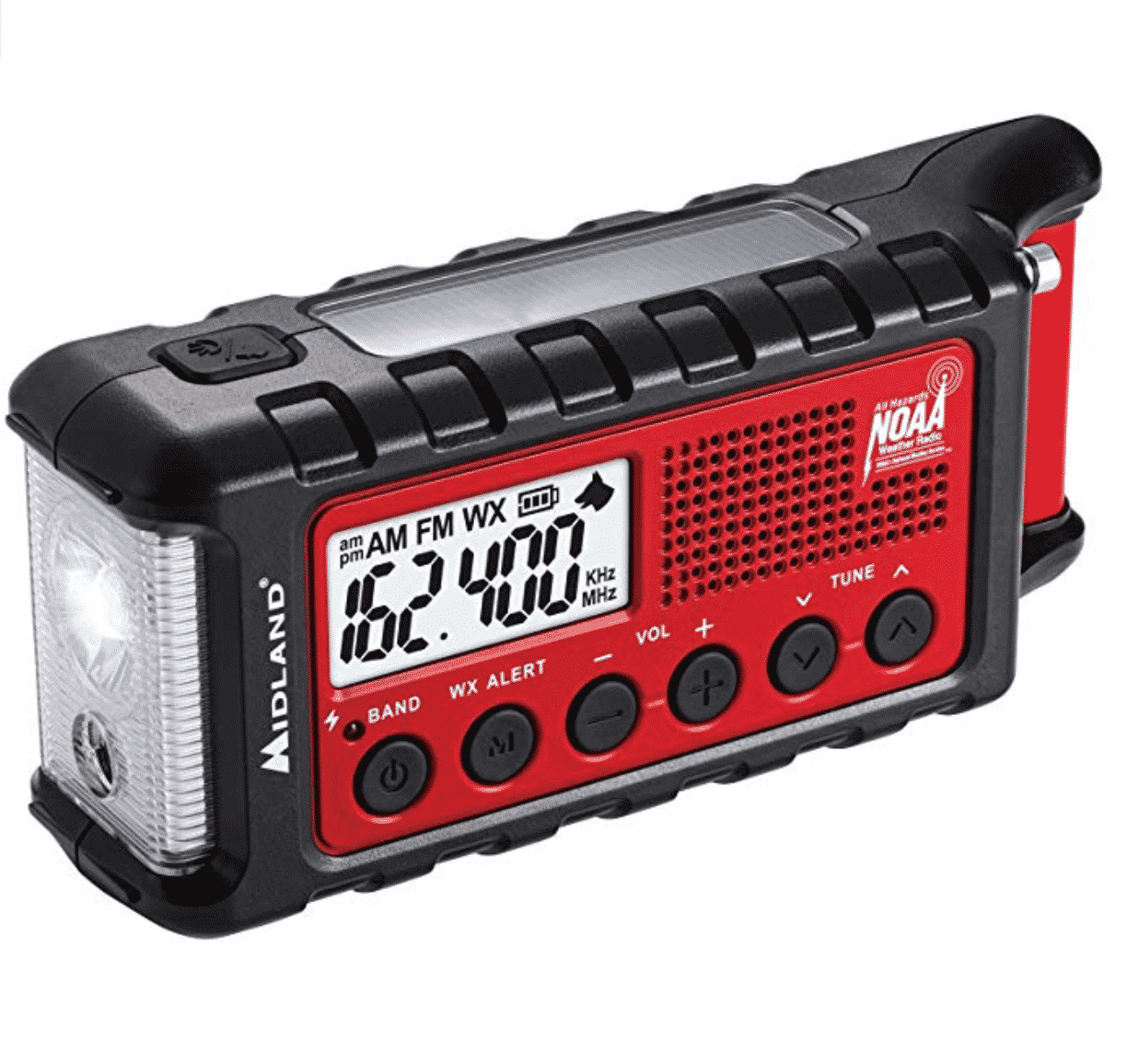
Best Weather Radio All-around
Midland ER310
Last but not least, we have the Midland ER310, which is the most well-rounded weather radio on the market. If you’re looking for a dependable weather radio with good features and a versatile design, this is the one for you. Like the RunningSail model above, this ER310 functions as a flashlight, phone charger, NOAA radio and AM/FM radio all in one. It also has the same changing options: solar, hand crank & USB. What you get more, however, is a stronger battery, an automatic NOAA channel scanner and alerts that keep you safe when severe weather is on its way. One more neat feature it has is an ultrasonic dog whistle so that you can be easily be found by rescue teams should the need ever arise. This unit would make a great gift for since it has a little bit of everything.
As you have visited this page, I’m pretty sure that either you are interested in knowing about weather radio and its uses, or you may be looking forward to purchasing one for yourself and doing some extra research – either way, you’ve reached the right place! When shopping you’ll come across endless choices, which is why choosing the ultimate weather radio is quite confusing. To make it easier, I have created some guidelines for you.In this page, you’ll read a lot of information about weather radios that you ought to know, and maximum ideas about purchasing the device. On my site, not only you’ll get necessary information but also learn the best way to select the ultimate weather radio, suitable for your own needs.
Guide for Choosing the Best Weather Radio
Now that we’ve gotten an overview of the best weather radios out there, let’s take a deeper look.
If You Have Limited Time for Research
I tend to go into a lot of detail when writing about these products, but many of you might not have the time to go through everything. If you have some extra time, however, then please feel free to read “Ultimate Buying Guide for Choosing Best Weather Radio” in addition to this article.
Factors to Consider While Buying a Weather Radio
1. Purpose
Firstly, you should decide the actual purpose you want your weather radio to serve. Do you require it for indoor or outdoor applications, like camping or hiking? The best weather radio for you will be different depending on the purpose you intend to use it for. If it’s for your home or office, then a desktop weather radio with SAME technology would be an ideal choice. If you intend to use it outdoors or for emergency purposes, however, then portable weather radios or emergency radios are perfect.
2. Specifications
Firstly, you should decide the actual purpose of the weather radio that you’re buying; whether you require it for indoor or outdoor applications like camping or hiking. If you need a weather radio for home or office, then a desktop weather radio with SAME technology is an ideal choice. But if you require a weather radio for outdoor use or emergency purposes then portable weather radios or emergency radios are perfect.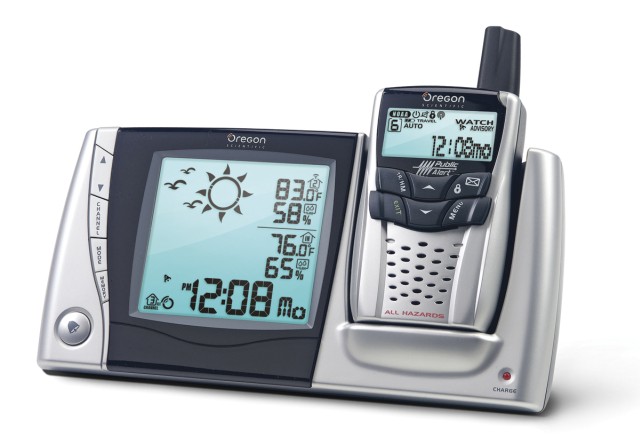
Weather Radio
- Notifications: The type of warnings that a weather radio can provide are very important. Some devices only offer emergency weather announcements while some provide both emergency as well as other public announcements.
- Channels: The number of weather channels that a weather radio can broadcast is another important factor. Also, the number of bands must be considered if you wish to have some entertainment.
- Alert: This is one of the most important features in many weather radios, specifically desktop weather radios. This feature allows the device to remain silent and go off only when an emergency weather warning is broadcasted. Basic weather radios usually do not have this function as they simply broadcast all local weather information.
- S.A.M.E.: This allows the user to receive warnings for a specific county instead of the entire area that the broadcasting weather station serves. It can be toggled on or off.
- Receiving Antenna: It might be challenging in some areas to receive the NWR (NOAA Weather Radio). So make sure that the radio you choose either has a good reception antenna or an external port for an additional antenna.
3. Features
- Audibility: You should consider a weather radio that provides audible alerts. Some high-end models offer multiple tones.
- Durability: Everyone wants a device that can last for the long haul. Especially for those who are purchasing an outdoor device, durability is very important. You can even find a few portable weather radios that are weather-proof if that’s what you need.
Audibility: You should consider a weather radio that provides audible alerts. Some high-end models offer multiple tones.
4. Power Source
The best weather radios are designed to run on batteries or an AC adapter. There are some portable models with hand-crank features that come with built-in generators. Having many power backup options is always a good choice. If you are buying an outdoor weather radio, a model with a battery life indicator is essential.
5. Advanced Functions
Apart from the basic features, there are some cutting-edge weather radios that are designed with advanced features, such as in-built mobile chargers, emergency lights, easy-access tuning, and special alert features for individuals with disabilities. Such features would be invaluable during an emergency.
6. Cost and Warranty
The cost of a weather radio can range from under $20 to several hundred dollars. The costliest weather radio doesn’t necessarily mean the best choice; it more so depends on your requirements.
From 1 year to 2 years or more, all-weather radio manufacturing brands offer some period of warranty with their product. It’s always recommended to choose the product that comes with the maximum warranty so that your investment is secured later down the line.
Additional Information
If you are keen on knowing more about weather radios, then by all means, read on!
Size and Weight
Size and weight are very important aspects of weather radios. If you are buying a device for indoor use, it doesn’t matter much. In case you want a weather radio for outdoor use, however, it’s best to get a device which is small and lightweight. There are many pocket-sized weather radios that are specially designed for this purpose.
Night Vision Feature
A weather radio with night vision will allow you to see it clearly in darkness. This technology is very useful during emergencies. A few high-end weather radios come with the night vision feature, which is mostly preferred by law enforcement officials.
Weather Shield Feature
Sometimes you may need a unit that not only has rugged construction but also has some kind of weather shield against natural elements like ice and water. For example, if you reside in an area with extremely freezing temperature then you’ll need a weather radio which is ice-proof. So in case you are likely to face this type of extreme weather, a weather proof device would be the best weather radio.
Alert-blocking
The alert-blocking feature allows users to turn off the alarm system for non-life threatening warnings. At times, unnecessary warning could be annoying. This feature will let you set the alarm only for selected broadcasts.
Honorable Mentions
If you couldn’t find anything in the above list that satisfies your needs, here a a few more solid choices for you to consider.
Weather radios are designed to run on batteries or AC adapter. There are some portable models with hand-crank features that come with built-in generators. Having many power backup options is always a good choice. If you are buying an outdoor weather radio, a model that provides battery volume indication is an ideal choice.
1. Epica Emergency Solar Hand Crank
Pros:
- Multiband radio includes AM, FM and all the 7 NOAA channels, literally giving you all types of news.
- Can be charged in 5 different ways including AC, Crank, USB, Solar, and DC. A crank of 2 minutes makes the radio work for more than 20 minutes.
- Comes with a built-in flashlight that allows you to see in the dark. Also, it has a cell charging port so that you can charge your phone during the emergency.
- The device is water resistant and has the rugged construction.
Cons:
- It misses some basic features like the battery level indicator and SAME technology.
- The unit comes with many accessories, it has no built-in room for storing them.
2. RunningSnail Solar Crank
Pros:
- Offers AM, FM and 7 NOAA weather channel tuning, and has SOS alarm with red light LED indicator.
- Can be charged by hand crank, USB and Solar. Also it can work on AAA batteries for backup.
- 4 LED reading lamp and a 1W LED flash for alerts. Plus, an adjustable zoom helps you to read in the dark. It’s ideal for camping.
- The device is water proof, so you can use it even during rainy weather.
Cons:
- This unit lacks a battery level indicator and SAME.
- It has analog tuning, so some might consider it primitive.
3. Kaito KA500 5-way
Pros:
- Five power options include dynamo crank, solar, batteries, USB, and AC.
- Battery level indicator LED that keeps the users updated about the battery life.
- Receives multiple bands including FM, AM, SW, and NOAA.
- Has integrated lamp and flashlight for user convenience. It also has a cell phone charging port.
Cons:
- Tuning mechanism of this device is quite primitive due to analog design.
- Cell phone or other USB devices connected to the radio cannot be charged through the solar panel.
- It doesn’t have SAME (as discussed above).
4. Midland WR120/WR120EZ NOAA
Pros:
- Receives 7 channels of NOAA, along with various warnings such as flood, tornadoes, and thunderstorms.
- Has SAME technology that activates the alarm only when the specific county is threatened.
- You can set up to 25 counties. It has a 90 dB siren and voice alert feature. Also, LED flash warning system for individuals with hearing conditions.
Cons:
- It has been designed for indoor application as its power requirement is not suitable for outdoor use.
- Doesn’t have alert-blocking feature, so some might feel the warnings unnecessary and annoying.
- It’s not designed to receive other bands like FM or AM.
5. Horizons Tec HT-747.2
Pros:
- Receives multiple bands including AM, FM and most importantly NOAA warnings, which keeps you alert about all life threatening events.
- Can be charged in three different ways; solar panel, crank, and USB, so there is minimal chance of power shortage.
- Has some advanced features such as LED flash, cell phone charging port, fire starter, whistle and paracord survival kit with a compass. Paracord makes an 11 foot long rope when unbraided.
Cons:
- Lacks the SAME function
- The radio might have trouble receiving signals in remote areas. Also, the Antenna is a little fragile.
- Its flashlight is not as bright as may be expected.
6. VonHaus Premium NOAA
Pros:
- Multifunctional weather radio receives AM, FM and 7 NOAA weather channels, offering you updates for all emergency events so that you can prepare yourself for challenging situations.
- Has 2200 mAh battery capacity, with 4 charging options, including dynamo crank, solar panel, USB, and AC adapter.
- LCD backlit display for easy tuning. It also has a clock, a built-in speaker and a 3-LED flashlight.
Cons:
- It lacks the SAME function.
- Lacks battery level indicator, so you won’t know the battery is low until the radio goes shuts down.
- Some say that the signal isn’t very strong
7. iRonsnow IS-088+
Pros:
- Can be used as both AM/FM radio and emergency radio for receiving weather alerts. You can tune to 7 NOAA weather channels.
- Very convenient to use as it’s small and relatively light.
- Can be powered in three ways including crank, USB, and solar.
- Powerful LED flashlight and power bank for charging your iPhone or Android Smartphone.
Cons:
- Not capable of fully charging a Smartphone. The phone can be charged for only a 10-minute call.
- Lesser charging options than other weather radios with the same capacity.
8. Sangean H201 AM/FM/Weather
Pros:
- Comes with digital tuning for AM, FM, and weather, with 10 station presets and auto-seek feature for easy-use.
- The device is water resistant up to JIS7 class.
- Featured with a large and easy-to-read backlit LCD for user convenience. Also has an easy-to-apply hanger and bracket to hold on to.
- Comes with many other features like LED Flashlight, clock, emergency buzzer and battery level Indicator.
Cons:
- The size of the radio is quite large and is heavier in weight as compared to other weather radios in this category.
- Runs on alkaline batteries and has no power backup option.
9. Midland WR300
Pros:
- You can tune to FM, AM and 7 NOAA weather channels and stay updated with the important weather updates and events.
- SAME technology with 23 programmable counties allows the user to set the weather radio to a specific county or nearby counties.
- Volume of the siren can be adjusted and also can be set for silent programming. It also has color-coded alert indicators for people with hearing disabilities.
- It has an all-hazard warning feature.
Cons:
- It lacks important features like the flashlight or Smartphone charger.
- Not particularly designed for an outdoor purpose.
10. Midland ER200 Emergency
Pros:
- Multi-band feature allows the user to access FM, AM and NOAA weather channels.
- Multiple power sources include hand crank, rechargeable battery and solar, with a large battery capacity of 2000mAh, which can generally last up to 25 hours.
- Features LED flashlight with high and low adjustable button. Also, it has a USB port for charging portable devices like smartphones and tablets.
- SOS Flashlight Beacon that activates Morse code to assist during an emergency.
Cons:
- It isn’t water resistant.
- 2 minutes of cranking only gives around 2 minutes of battery life.
- Although weather channels can be easily received, AM and FM bands may be spotty at times.
11. Midland HH50 Pocket Weather Radio
Pros:
- Has 7 preset weather channels and receives NOAA severe weather warnings.
- Automatic alert system turns on during life-threatening weather conditions and civil emergencies.
- It’s water resistant and highly recommended for outdoor use. It also has a 6-inch telescopic antenna that receives crystal-clear signals.
- Auto scan function helps in picking the local weather channel easily on start-up.
Cons:
- Doesn’t have multi-band feature and can’t receive AM or FM bands.
- Lacks flashlight and charger.
12. Sangean DT-400W
Pros:
- Other than weather channels, it also receives AM and FM bands. Has alerts for extreme weather conditions and other events like police emergency and child abduction.
- Even when your radio is off or if you are listening to another station, the weather alert monitor constantly monitors the NOAA channels for any emergency warnings. However, to save battery life you can set the time when you want the alerts to be active.
- Other features include a lock switch, 90-minute auto shutoff option, built-in speaker, auto-seek function and a removable belt clip.
Cons:
- Lacks some important features like the flashlight, cell phone charger, and the SAME function.
- It’s not water resistant.
Final Thoughts on Choosing the Best Weather Radio
I hope you have found this information useful. I have come across many buyers who ended up regretting their investment only because they didn’t have the right information when purchasing. I know how it feels as I have faced this type of disappointment myself. Learning from my mistakes and doing some hefty research lead me to sharing this knowledge with other weather enthusiasts like you.
The rest of this website contains a plethora of information on weather stations and thermometers, which you may also find helpful. I have tried to keep everything simple, to the point, honest and easy to understand. I hope you enjoy my site and find what you are looking for! Good luck in selecting the best weather radio for your needs.
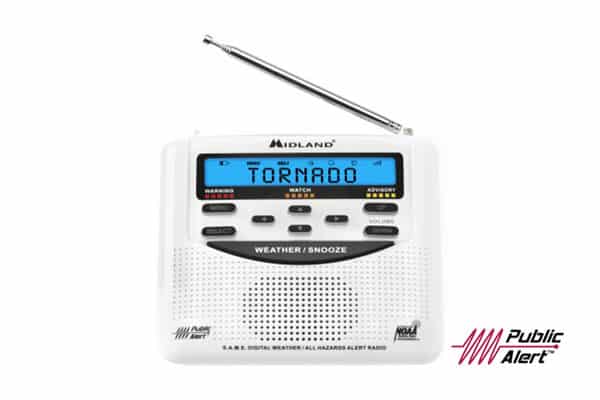
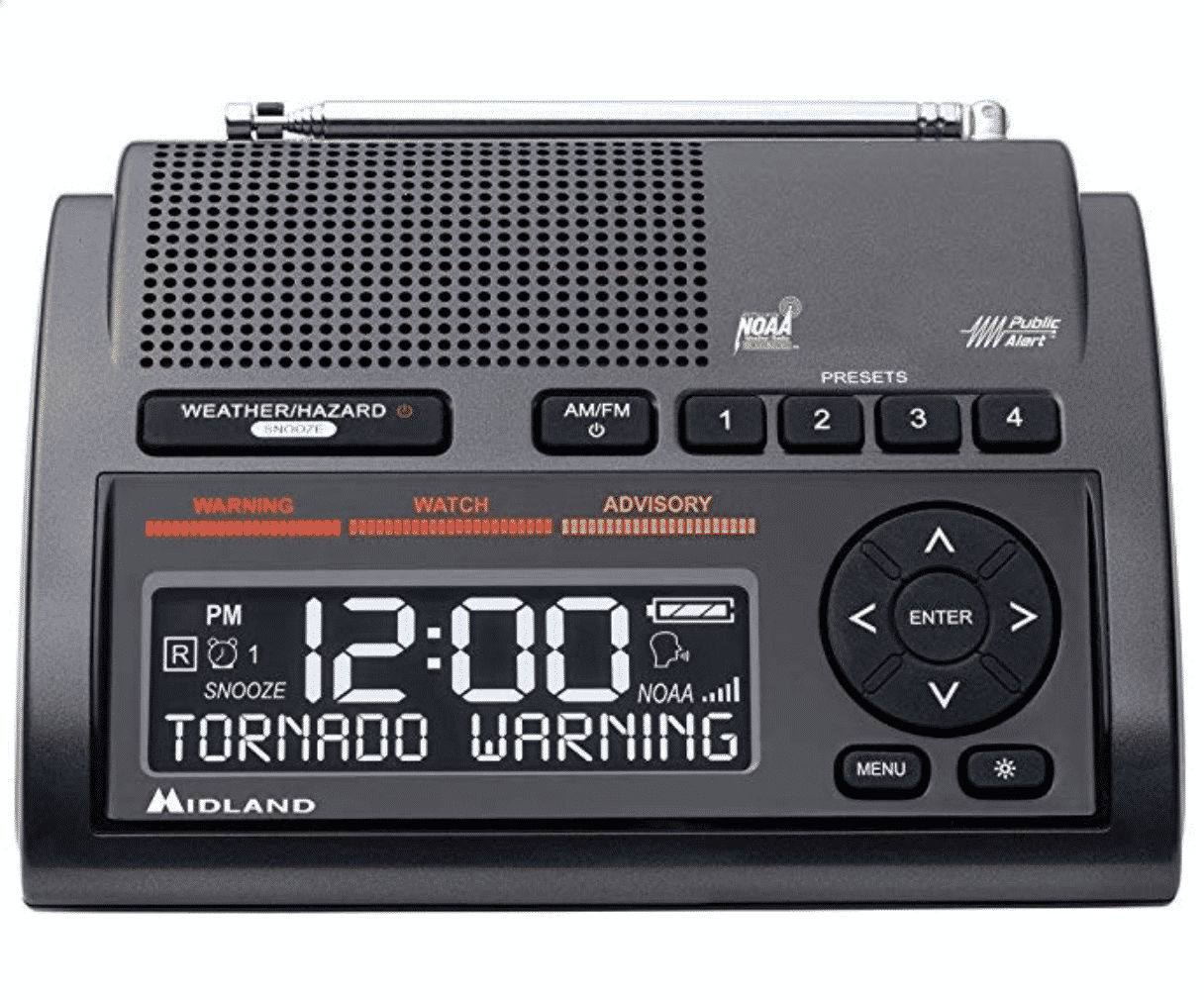
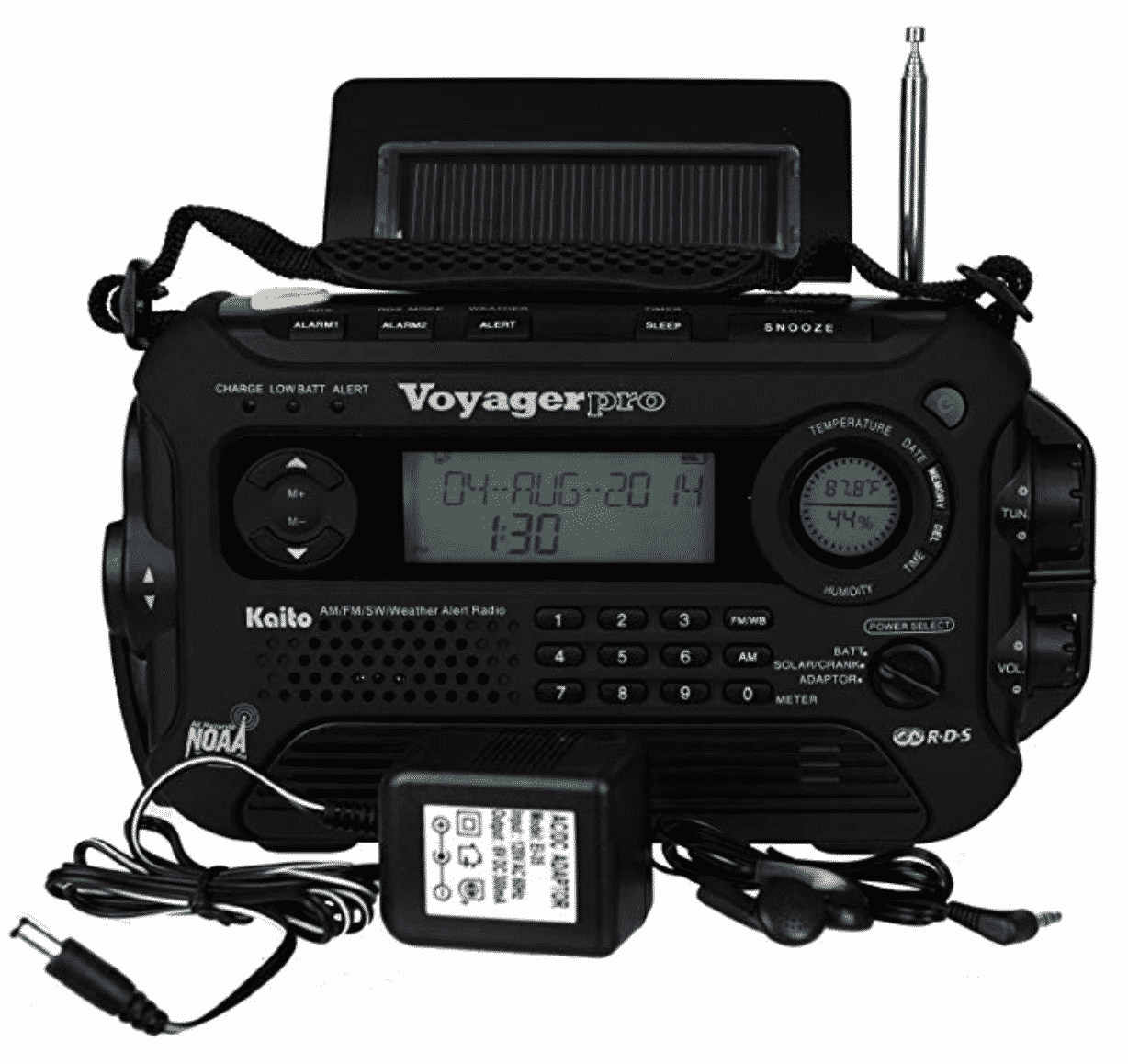
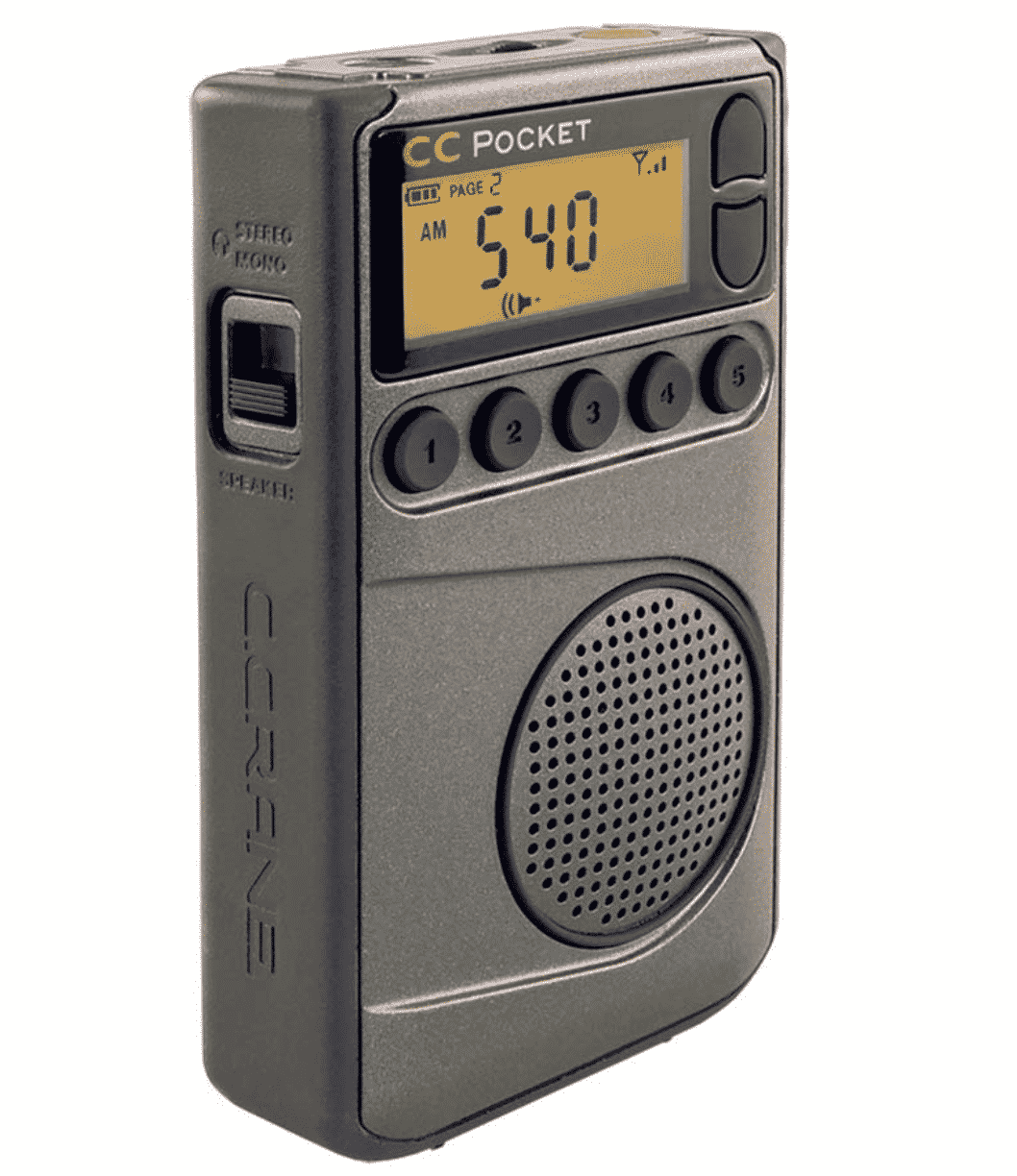
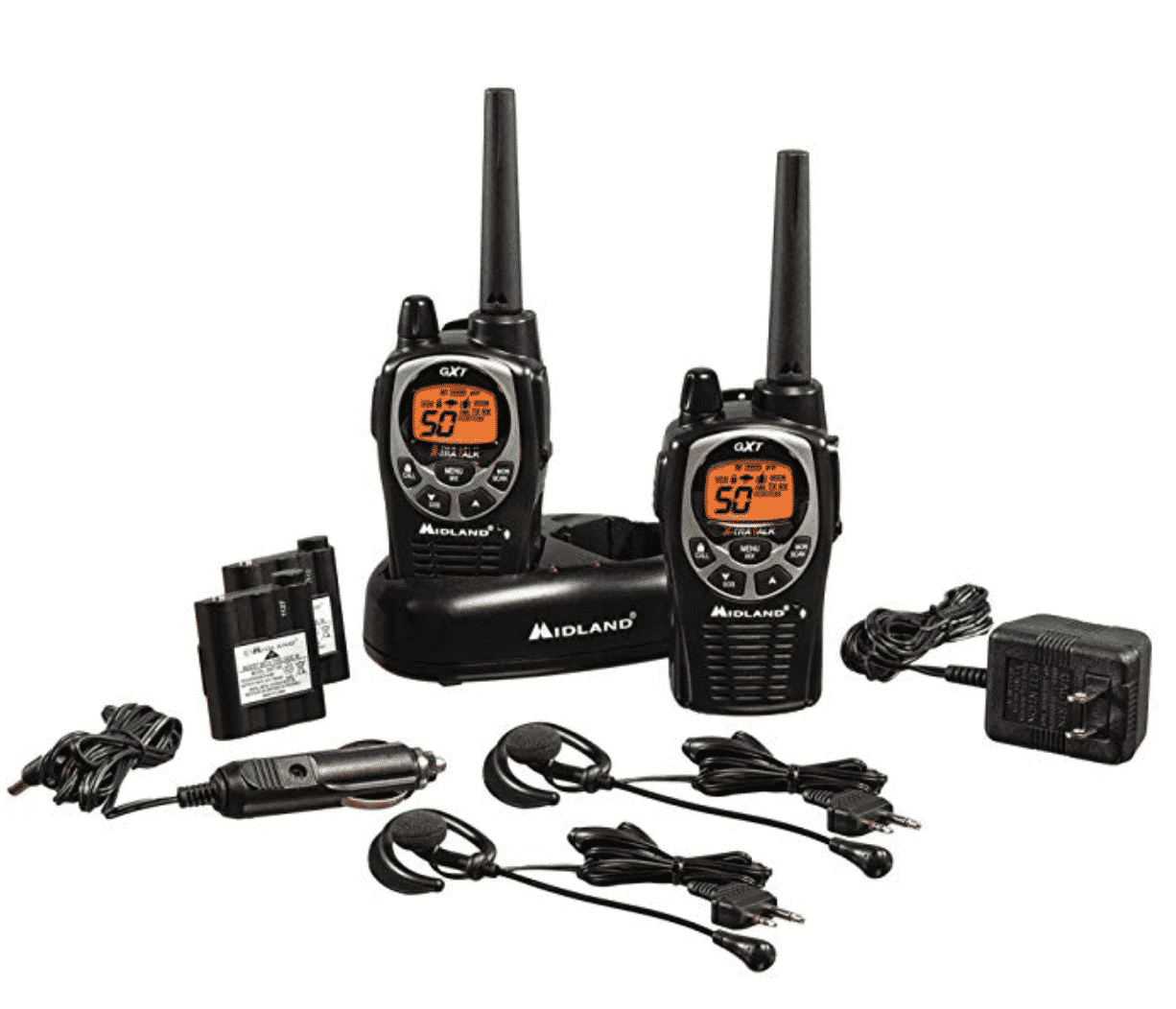
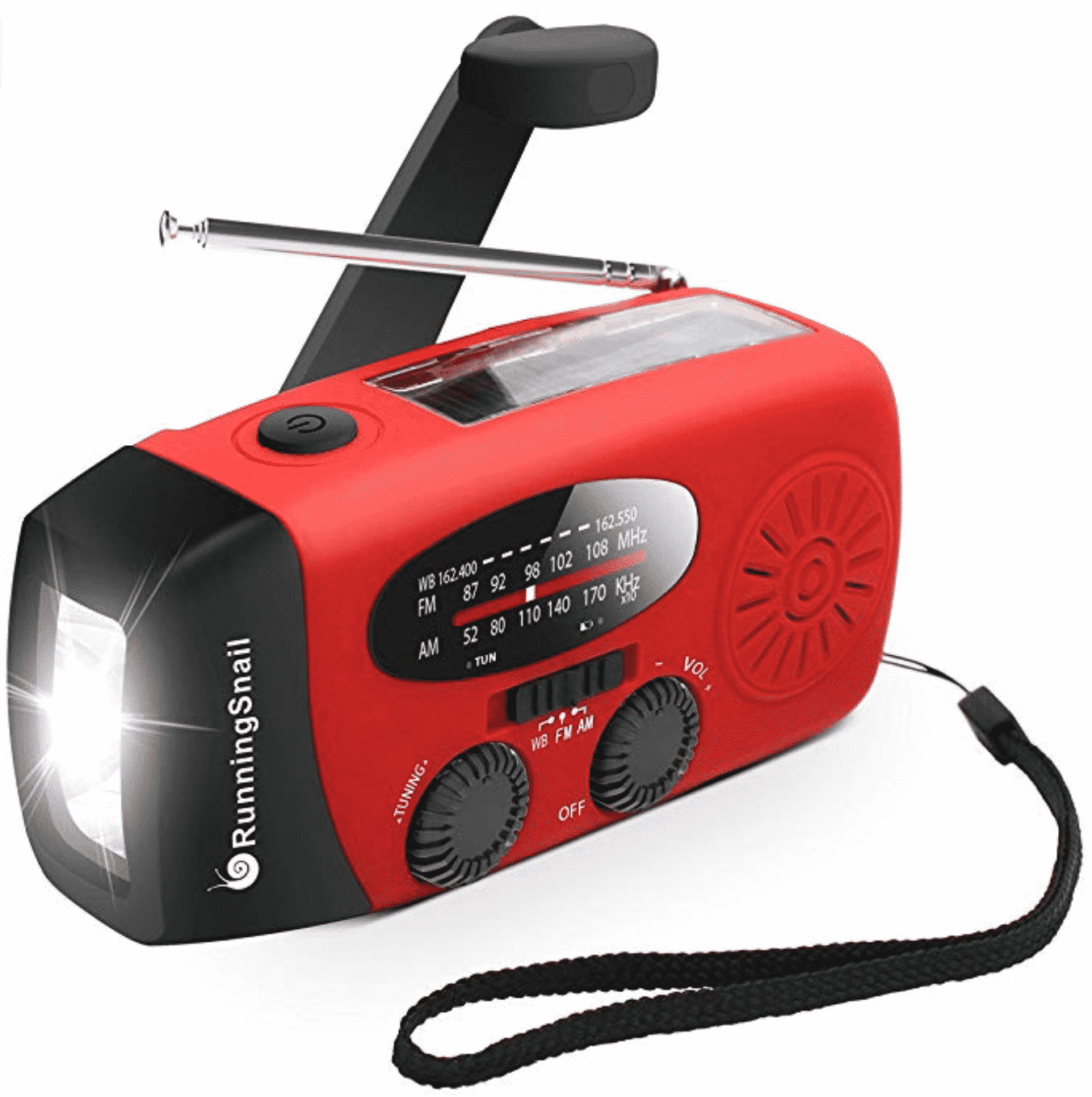












Thanks, this helps
Excellent summary for novice buyer, but so many choices. Would recommend summary chart to make selection even easier.
I live in Carolina Beach NC.
I’m looking for the best weather radio for use prior to hurricanes and esp, during hurricanes ( AM/FM radio). The local TV stations weather division said they would program for us. We’ve dumped cable and satellite TV….and save a ton of money So I can afford to buy a good unit. We have a 13K genset on the house so covered there. So…when the local air TV goes out due to a storm (H). I’d like to have solid, technology smart radio. Would like to ensure SMART and auto turn off after warnings, cell charger, require a really good battery that is strong and rechargeable
Your #1 pick or top two?
Best
Great job on your article!!!!
I enjoyed the easy yet very descriptive format.
Thank you… Merry Christmas
Donna
Thanks for your very thorough analysis! For home use with SAME and alert feature, do either 11 or 12 comply?
Have any similar recommendations for a good home unit which also has SW, or if not, a separate recommendation for a portable or home radio with a couple of SW channels,?
Thanks!
It would be helpful (and impotant), to note which radios have the NOAA Logo, which establishes that the device meets certain specifications/functions provided the NRW Service. Thx
Any recommendations for a public library with lots of steel inside it? We tried a Midland WR300 and got NO reception
If you can find a window facing the weather broadcasting antenna you might get good reception. You could experiment with different windows. Also, some radios have a connection for an external antenna. You could put the antenna in the window and leave the radio on your desk. Good luck.
Run a coax to roof and use a GOOD antena optimized for the NOAA bands, add an inline preamp if needed.
Well done … thank you for taking the guess work out of such an important purchase.
You stated that the Midland WR120EZ has no alert blocking feature. Is the Midland WR400 the same radio except with the ability to add and remove alerts? Are there additional cons for the WR400?
I can’t believe your highest rated radios didn’t have SAME. That seems essential to me.
Reviews #9-15 did not address the lack of SAME technology and all other portable models appear to NOT have SAME as well. Is there a model that has both NOAA and SAME?
After much review, I purchased the Midland WR120 EZ today for my home. I still need a unit for when I camp.
Any guidance you can provide? Thank you for the work you have done.
I like and have the Midland HH50 pocket weather radio that was recomended. Keep one in my car all the time. It also has weather alert with a siren only and you have to push a button to get the message when it goes off. Plus it doesn’t have the SAME feature to filter alerts like the Midland WR120 EZ does. But with all said it is still a good weather radio even though it will alert anytime one sent out on the channel you are listening on. I like it because of its size and because it runs on 3 “AAA” batteries If you only use it when you really need it the batteries can last quite a long time. With my HH50 I am using the Energizer Lithium Batteries because they seem to last a lot longer in storage and perform much better in extreme temperatures and won’t go dead as fast just sitting in storage. My weather has sat unused for months and I when went to turn it on recently the batteries powered it just fine.
It retails for about $20 and that is the price I picked mine up for.
If you still have the Midland WR300 try siting it near a window.
If that doesn’t work but you have WiFi, get a cheap tablet computer and put a weather app on it. Try to find a weather app with audible notifications.
If you have a sizeable budget for this, also look at tying into your town’s emergency alert system. Each municipality is different and will have a different solution.
Want to give to college grandkids that will wake them when necessary. One in OKC! All have phones, of course, that probably get charged at night. I like the SAME idea; but doubt if they know counties around them. What do you suggest?
I would suggest the WR120EZ just for the fact that you can buy the a Walmart and that particular model is reasonable priced. I’ve seen the radio for as low as $30, give or take.
And with any weather radio with the SAME feature your going to need to know what county your in and if you want to receive alerts multiple counties . And if you want to receive alerts from more than just your own county you also have to know which frequency to be on because each frequency alerts for specific. That way you can be on the correct frequency to be alerted for all the counties you want to receive alerts for. If they don’t know what county they are in the radio would still go off but for any alert sent out on the frequency (channel) the radio is set to. Hope that helps out a bit.
Well I currently have an Emerson Research with SAME and cannot see how to set the time on the dang thing…probably same engineers that enabled the blinking time on VCRs from long back.
Please include ease of use in your evaluations.
Ty.
d from TX
Have you gone out to the web an searched for the instruction manual for the radio? You’d be suprised to find out how many different products have their instructions posted on the internet.
the wr400 is junk…. many features removed like no adjustment for the siren volume!! It scares my kids and wife going off at night over a wind advisory…close to giving me a hear attack
I think the siren volume may be controled with the actual volume that controls the radio itself. Try that and see what happens.
I am looking for a weather radio, We RV from state to state and never know what county we are in, but we need to know if bad weather is coming down on us.We have had several brushes with tornado and my Midland HH54 has to be programmed for the area. If you are traveling it is useless. Can you recommend a weather alert radio. Thank you Bob
Bob, just set the radio you already have to alert for all SAME codes you eliminate the need to know what county your in. You don’t need to go out and buy a new weather radio. You will have to listen a bit more when it goes off because when it does go off with the radio set to alert for all SAME codes one alert you here may not effect where you are. Also when your traveling be aware that you’ll have to change frequencies (channel) from time to time to find the frequency for he particular area your in.
Who really cares about all the extra features except millennials who live in a utopia – just more things to go haywire? How well to the radios work and what is their range with antenna or additional antenna? Those are the crucial issues – everything else is superfluous nonsense.
I agree with Greg. Who cares about an alarm clock. I just went through a devastating EF 4 tornado in Cookeville TN on March 3, 2010. I was directly in its 500 yards wide by 8 mike path of destruction. Cell towers destroyed, no power, no landline. I couldn’t reach my son or daughter in law or vice versa to see if they were okay.
So are researching weather radios. For me I need something portable too since I tent camp and hike year round. I was looking at Midland This is a good article on NOAA radios. I was looking at the Midland ER-310 but after reading the first few 3 star comments on Amazon there are legitimate design issues.
I don’t know if the author of this article has real world test knowledge of the recommended weather radios or is just going by the listed features. I fear it’s the latter
I am looking for a pocket weather alert radio that has replaceable batteries and A/C cord. It should have AM/FM and be able to play am/fm while the alert is on. There are other features I do like….but this is the minimum. I have not been able to find one.
Please help…Thank you